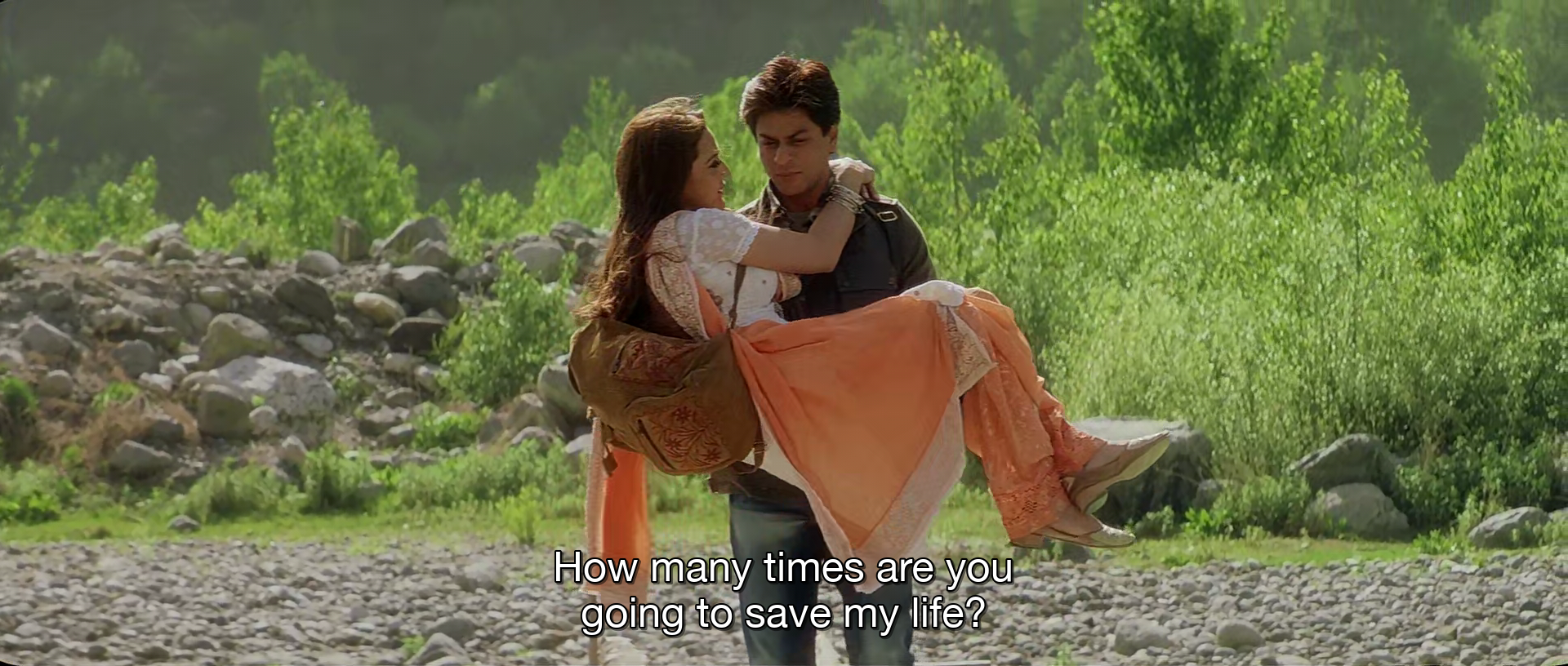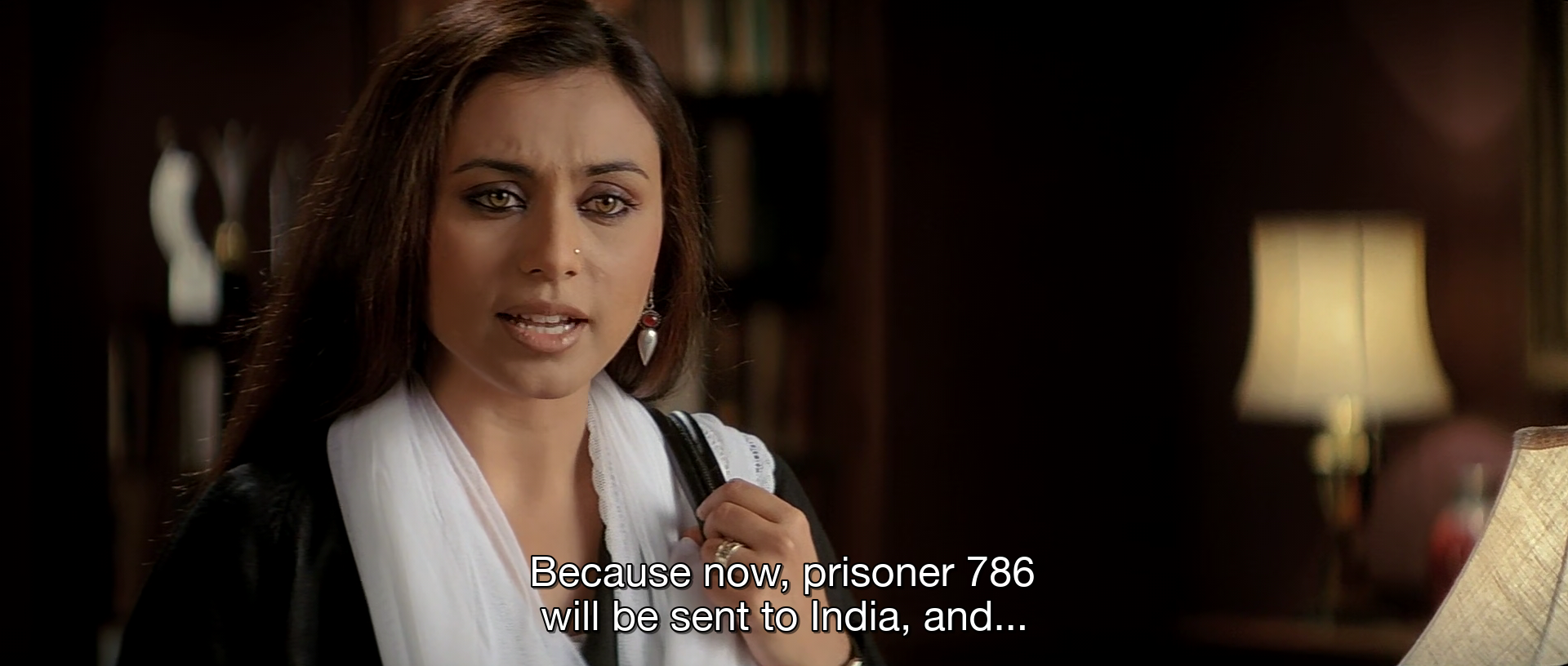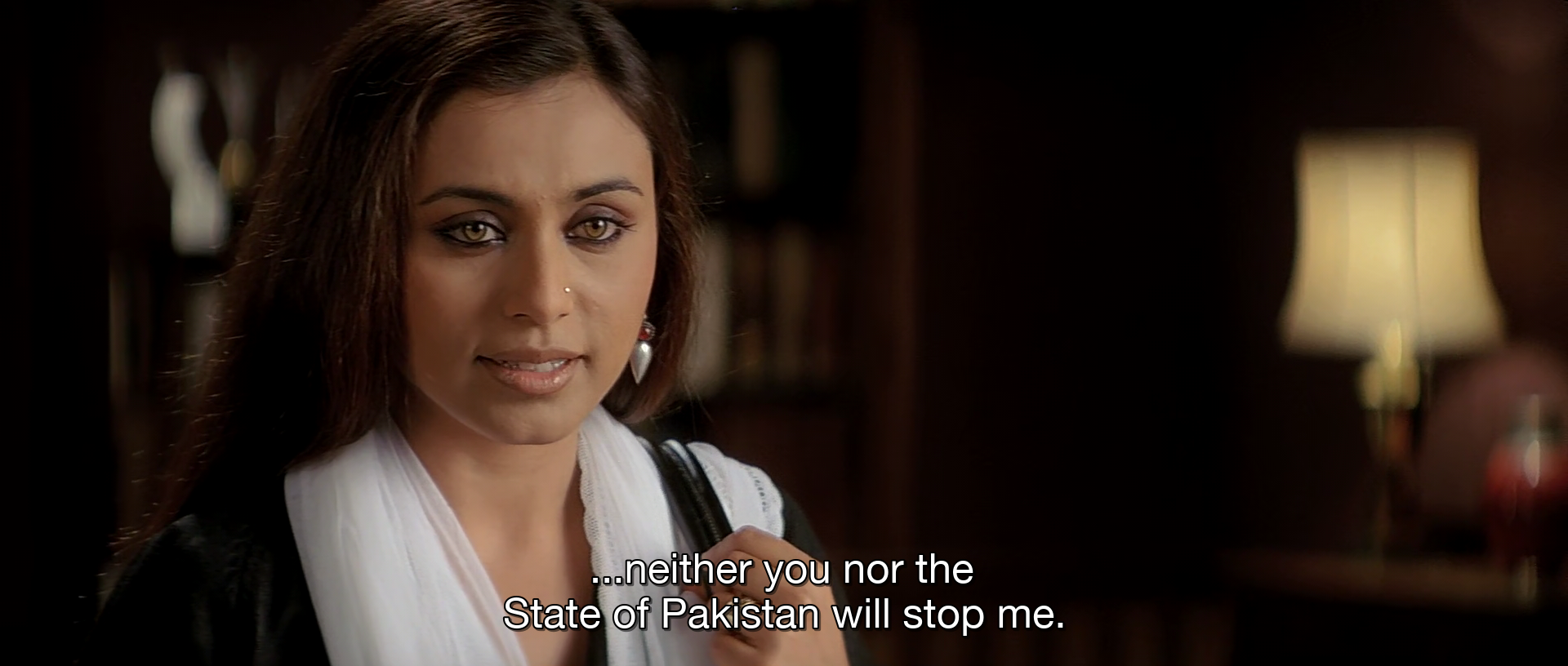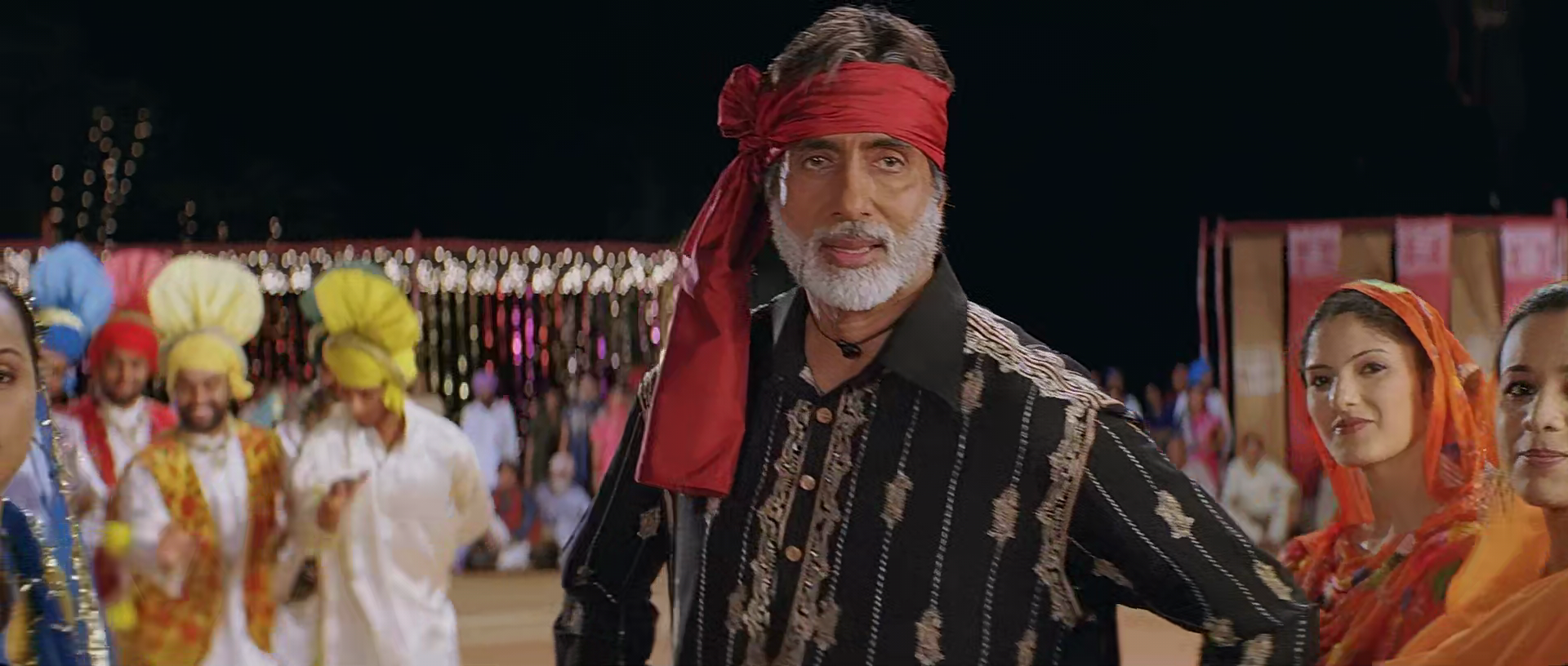
On 12 November 2024, the late Yash Chopra’s Veer-Zaara clocks 20 years. Social media is rife with memes that disprove Shah Rukh Khan and Preity Zinta’s aging as shown in the film. Now, Veer Pratap Singh and Zaara Hayat Khan weren’t matinee idols with access to premium nutritionists, fitness coaches, and makeup. They were (almost) star-crossed lovers who waited for 22 long years – one in jail and the other in the memories of her beloved.
So, what makes the film incredibly special to every Bollywood-loving millennial?



The 22-Year-Long Exile for Love
Will you live a lie for over two decades in exile, only so you can protect your lover’s honor? Veer-Zaara‘s definition of love is implausible for Gen-Z. For millennials, who have been brought up on a staple diet of fairy tales that epitomize celibacy and longing, Yash Chopra’s protagonists are paragons of sacrifice. Although widely admired, Veer-Zaara’s philosophy and aesthetics of romance are now extinct after the filmmaker’s demise in 2012.


Madan Mohan’s Glistening Melodies
One of my prized possessions is the twin audio CD pack by YRF Music. It has the soundtrack, of course, but a complimentary disc contains the late Madan Mohan in his music room, creating these beautiful compositions.

Did you know that the tune for ‘Tere Liye’ was created for ‘Dil Dhoondhta Hai’ from Gulzar’s Mausam?
Aside from the songs, R. S. Mani’s background score, which takes strains from Madan Mohan’s tunes and Lata Mangeshkar’s hummings, makes Chopra’s film a bona fide musical.
It always puzzled me why the Chopras didn’t hire Gulzar, a frequent collaborator with Madan Mohan, for Veer-Zaara. That said, Javed Akhtar’s lyrics for the songs add poise and progressiveness to the film.
The Right Kind of Patriotism
For two nations that faced an unfortunate separation and loss of life during partition, the thought that Javed Akhtar’s patriotic song ‘Aisa Des Hain Mera’ espouses hit hard:
“Yahaan bhi wohi shaam hai, wohi saveraa
Aisa hi des hai mera, jaisa des hai tera”

Years of hatred are dissolved in the simplicity of a song that chronicles everything that’s common between the neighboring nations—India and Pakistan. At several points in the film, Veer-Zaara endorses the idea of embracing the right kind of patriotism, not the chest-beating variety that we see in present-day Bollywood films.
“The future of these two nations rests with youngsters like you,” says Zakir Ahmed (Anupam Kher) and we agreed in unison. One must observe that the root behind this sentiment is Chopra’s growing-up years in the pre-partition era (the filmmaker was born in Lahore). He believed such a way of life would prevail someday and dismantle the complex border politics between the two nations.
The Heroine Introductory Song
From a playful waking-up routine to a dip in the bathtub and then the classic running across the meadows, Zaara gets it all in ‘Hum To Bhai Jaise Hain’ – the quintessential Yash Chopra heroine-introductory song.

We see Zaara as gorgeous and swan-like. The filmmaker’s aesthetics are largely unproblematic except when you see Zinta in Switzerland. While Khan gets a coat-muffler ensemble, the lady sashays in paper-thin Manish Malhotra sarees. When she sings, “badan kaamp jaaye”, it almost feels like a lament.

Rani Mukerji’s Hero Walks
Rani Mukerji’s Saamiya Siddiqui is a strong-willed newbie lawyer in Veer-Zaara. She is a Human Rights advocate in Pakistan who strives to make her deceased father proud without buying into the unscrupulousness of the profession. At one point, Zaara (Zinta) refers to her as an angel – a term too soft for her passion and grit. If we look closer, she is as much a hero in the narrative as Veer. If Manoj Bajpayee’s Razaa Shirazi is a quiet villain who seals Veer and Zaara’s love forever, Saamiya is the Djinn who breaks open the lamp to light up their world again.
Veer himself was easily convinced by Mariyam Hayat Khan’s (Kirron Kher plays Zaara’s mother) plea to give up on his dreams to fulfill society’s expectations but Saamiya – armed with progressive values – would never buy into such ideas.


Historically, we know how much Mukerji loves the hero walk and Yash Chopra gives her ample chances in Veer-Zaara to strut around like a boss lady (filmed in low angles for extra effect).

Amitabh, Hema, and the Warmth of Punjab
Zaara reaches India to fulfill her nanny’s last wish. A chance meeting with a stranger changes her life forever. It’s the night of the winter harvest festival Lodi, and Veer takes her to meet his family. Chaudhary Sumer Singh (Amitabh Bachchan) and Saraswati Devi radiate the kind of chemistry they never did in their Satte Pe Satta days. The couple’s hospitality and receptiveness to her ideas give Zaara more reasons to stay back.


Speaking of the senior superstars, I doubt if Amitabh Bachchan (essaying a part originally written for Dharmendra) has ever been as romantic post-2000 and if Hema Malini ever looked so rooted after her brief outings with Gulzar.
The Beauty of the Lodi Festival
In a chapter that offers a mini tour of rural Punjab across mustard fields on bicycles and tractors, Veer-Zaara also introduces us to what must be one of Bollywood’s most authentic-sounding festival songs.

‘Lodi’ sung by Lata Mangeshkar, Gurdas Mann, and Udit Narayan is not only the most wholesome number in the soundtrack, but the lyrics also that Javed Akhtar pens paint a way of life that balances love and equality. Interestingly, it was filmed in Mumbai Film City where native Punjabi dancers grooved to Saroj Khan’s super-fun moves. The song famously filled North India’s cinema halls with film lovers in high spirits.
Anil Mehta’s Magical Camera
A cinematographer who knows his filmmaker – that’s how I would describe Anil Mehta. As a filmmaker who would rather surrender to the director’s vision instead of developing a definitive style, the love songs in Veer-Zaara (‘Yeh Hum Aaagaye Hain Kahaan’) and Kabhi Alvida Naa Kehna (‘Tumhi Dekho Naa’) look drastically different despite Mehta and Khan being the common factors.





Besides keeping the earthy flavor intact, Mehta works his mastery with a mild sepia tint and imaginative usage of lights and spaces. We see how he frames the conflict between characters with physical distance. To showcase the lovers’ intimacy (particularly in songs), he often gets Khan and Zinta in extreme closeups along with slow-motion and long shots to project the couple surrendering in each other’s company. In key sequences featuring the duo, Mehta works employs rain – accentuating an already passionate story (Aditya Chopra).
The Lovable Shabbo and Bebe
Divya Dutta’s Shabbo is a caring housekeeper who is both a boon and bane to the family. The actor plays it with equal amounts of playfulness and empathy that we wish to adopt the girl for her free-spirited ways. In one of her last screen appearances, Zohra Sehgal plays a Sikh woman whose death wish triggers the story. It’s a brief part where her chat with Zaara on the deathbed lingers.


A Message on Religious Tolerance
In a Lahore prison, Veer Pratap Singh is prisoner number 786 – a holy number in Islam. Yash Chopra’s film respects every religion. Whether it is Zaara’s love for her Sikh nanny or Mariyam showering Veer with her blessings, the film exhibits how we are all the same irrespective of our faiths.


A Balanced Color Palette and Art Direction
The costumes and accessories are carefully handpicked to add character to Veer-Zaara’s characters – particularly its women. The film dresses up Zaara mostly in pastel shades (except in the songs) to highlight her vulnerability. Saamiya gets bright blue and yellow hues adding sheen to her bravado. The frames, set in rustic locales are never overly colour-corrected. The only peculiar thing by the production design team (Sharmistha Roy) is the excessive usage of candles in the Hayaat Khan household. The characters, notably Shabbo, are constantly seen extinguishing them in already-lit rooms. Why?

Veer-Zaara was released when Bollywood began to explore more modern ideas of love. Yash Raj Films alone produced Hum Tum and Salaam Namaste. The old-fashioned values in Chopra’s directorial were termed ‘soggy’ by a minority whereas the masses lapped the film up.


Released on Diwali, Veer-Zaara is not exactly a festive film. It is difficult to digest that the couple wasted their prime years suffering in solitude. If we observe, Veer and Zaara’s love destroyed the lives of everyone around them. In the universe of ‘happily ever after’ finales, Veer-Zaara is doomed to have the least happy of all.
In November 2024, Veer-Zaara has been re-released in the theatres and is also streaming on Amazon Prime.

